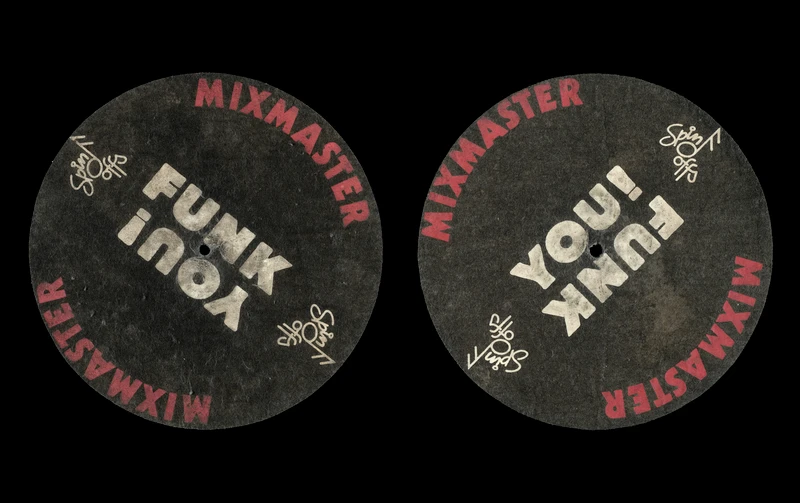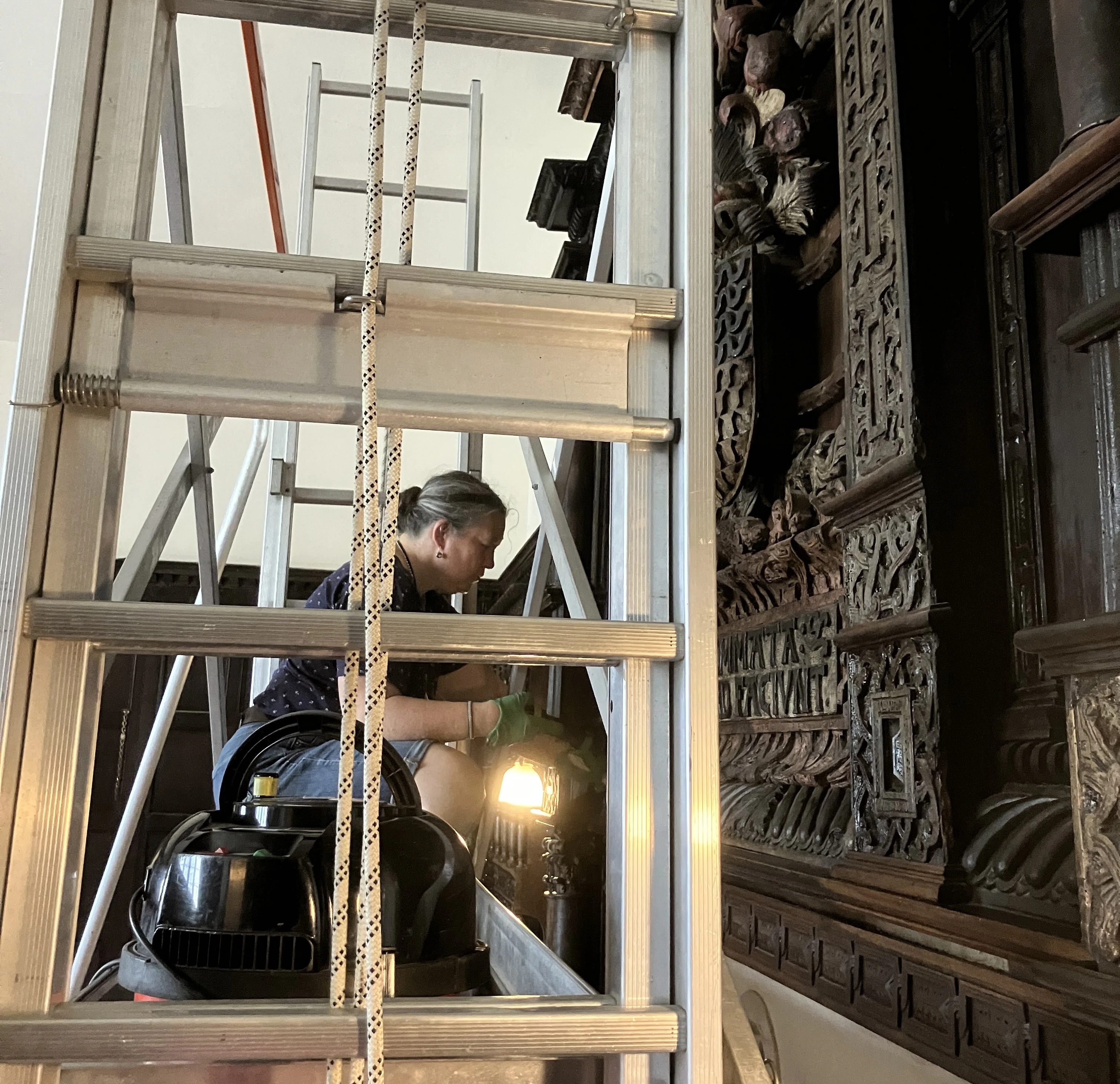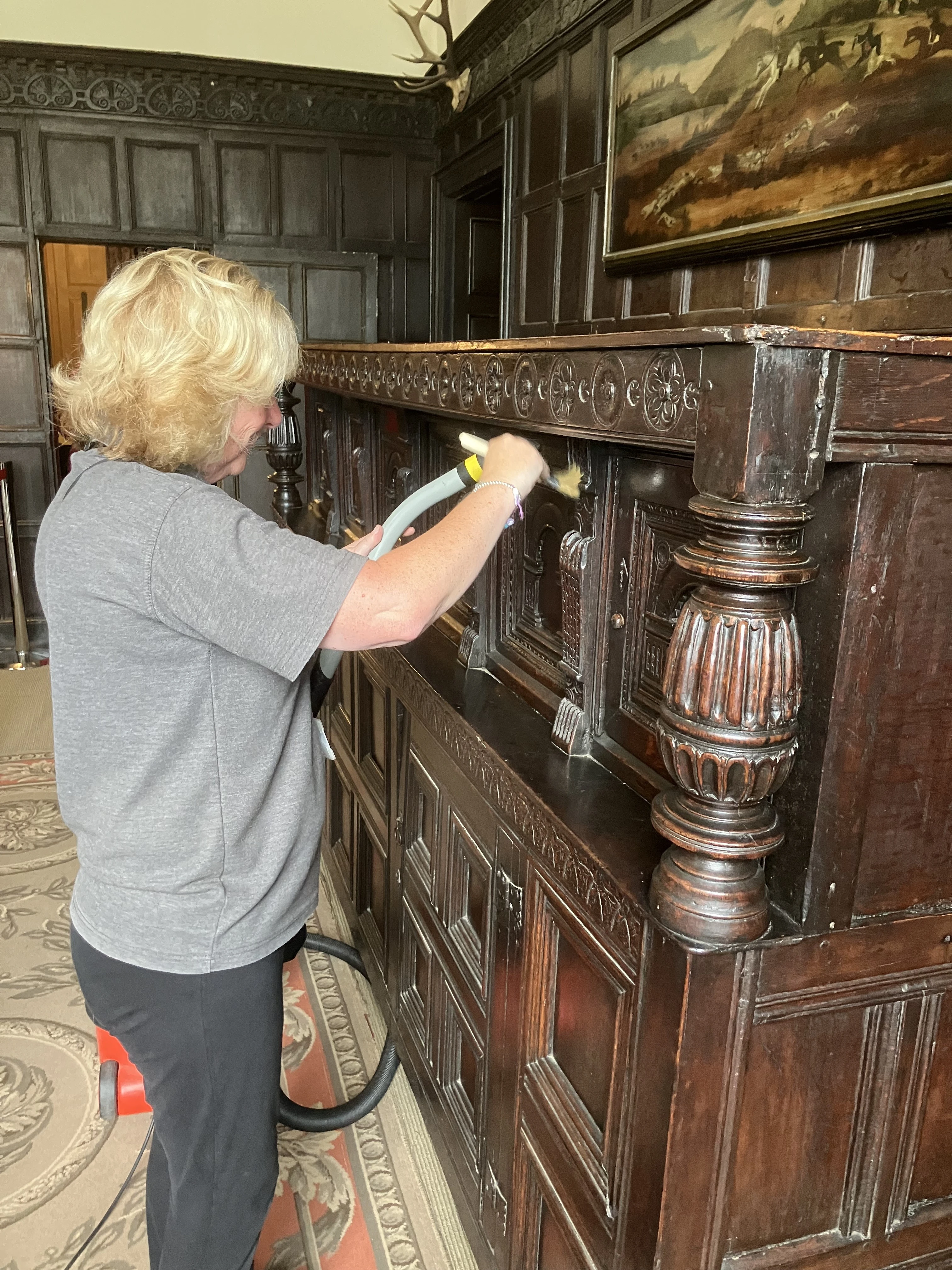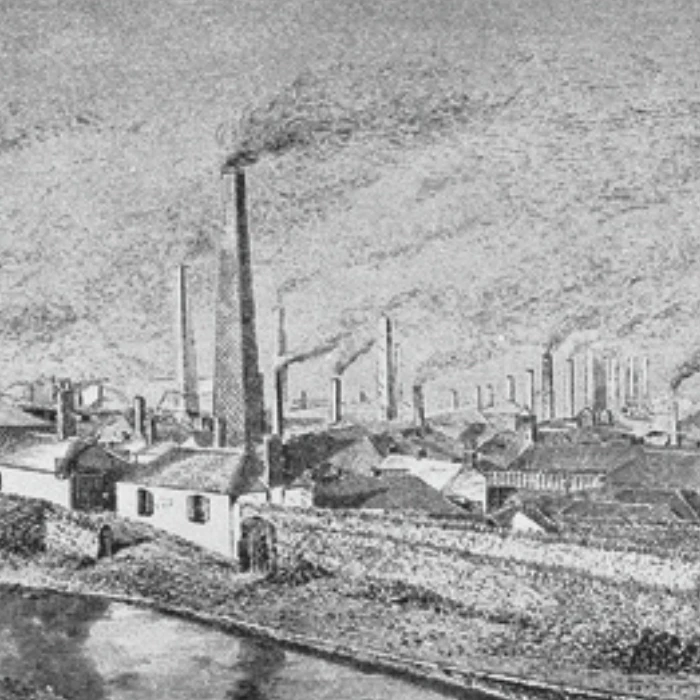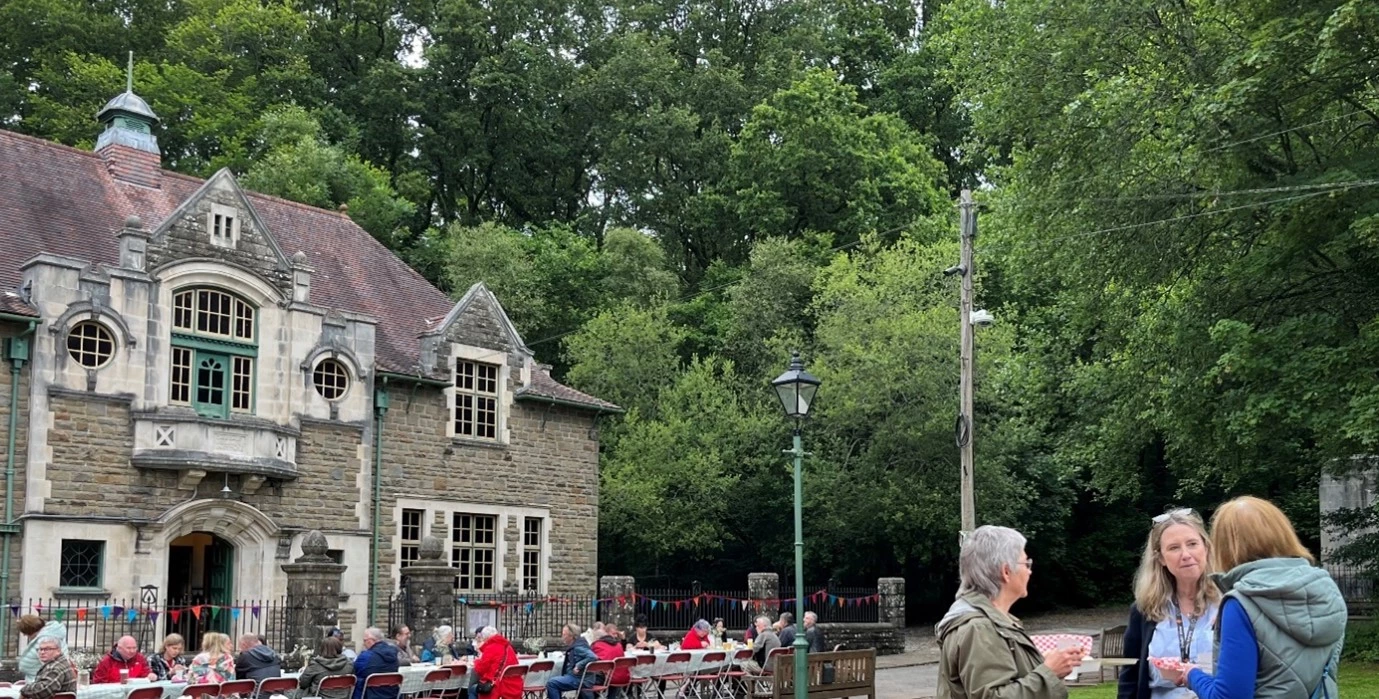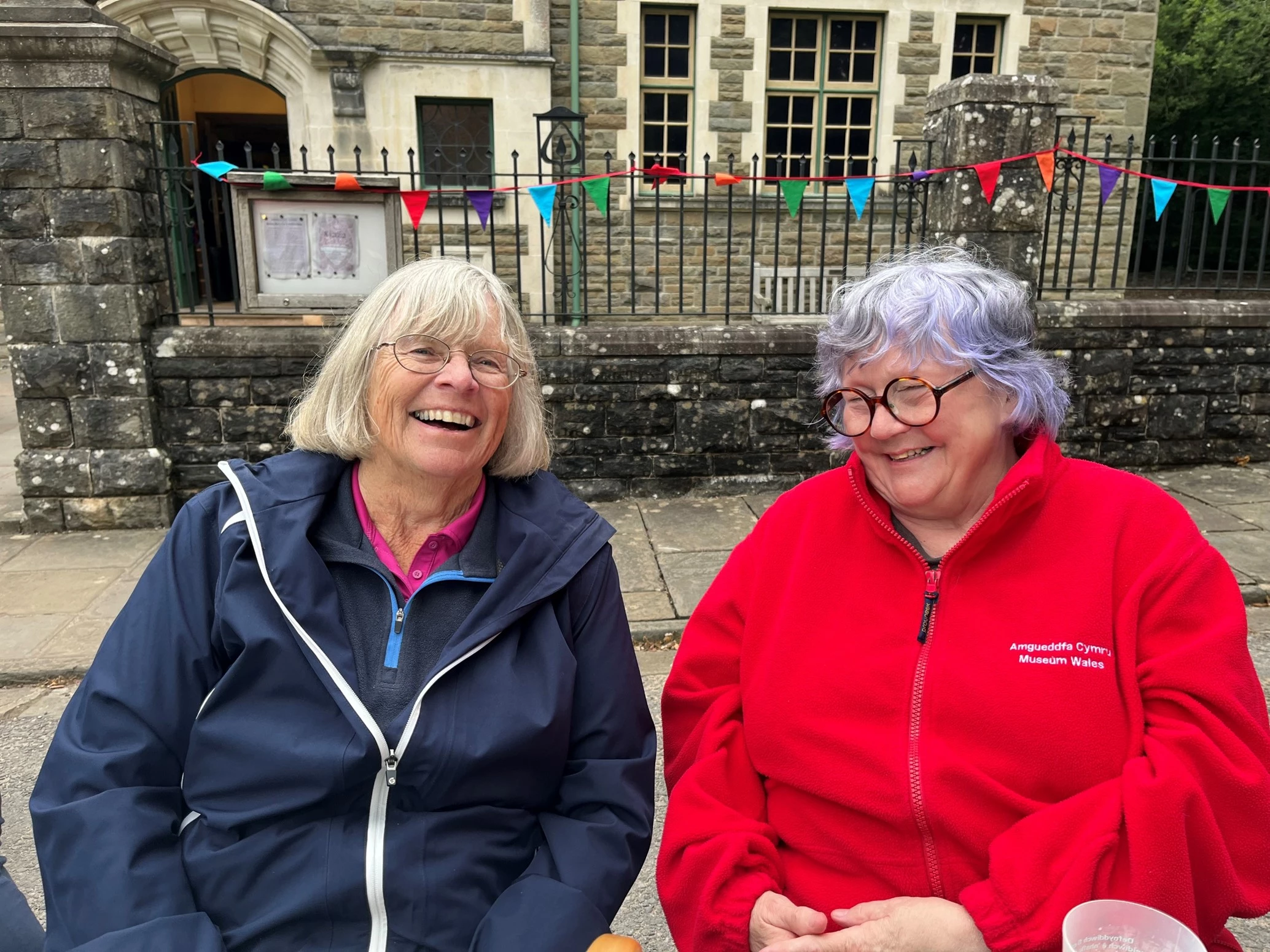Slipmats DJ Jaffa
, 15 Gorffennaf 2025
Mae slipmat yn ddarn allweddol o offer DJ pan yn chwarae feinyl, yn enwedig i DJs sy hefyd yn crafu neu'n gwneud triciau eraill gyda'r trofwrdd. Mae llawer o DJs, gan gynnwys Jaffa, wedi darganfod yn gyflym iawn fod defnyddio system hi-fi mam a dad i ddysgu crafu yn mynd i ddifetha'u casgliad recordiau nhw. Yn hytrach na rhwbio'r feinyl yn erbyn rwber neu blastig y trofwrdd, mae slipmat yn gadael i ti symud y record yn ôl ac ymlaen yn gelfydd heb farcio'r feinyl. Am y rheswm yma'n unig, roedd angen i ni gynnwys pâr o slipmats yn yr arddangosfa, ond nid unrhyw bâr sydd gyda ni, ond y pâr cyntaf erioed i DJ Jaffa ei brynu.
Os nad wyt ti’n gyfarwydd â’r sin Hip Hop yng Nghymru, falle bo ti ddim wedi clywed am DJ Jaffa o'r blaen, felly dyma ychydig o’r hanes. Mae stori Jaffa hefyd yn cynnwys rhai o'r eitemau eraill yn yr arddangosfa, ac fe esbonia i fwy am y slipmats yna hefyd.
Fel llawer o bobl eraill yng Nghymru a'r DU, blas cyntaf Jason Farrell, neu DJ Jaffa, ar Hip Hop oedd fideo miwsig Malcolm McLaren, 'Buffalo Gals', oedd yn dangos graffiti, brecio, crafu a rapio gan artistiaid Efrog Newydd. Mae hefyd yn cofio cael cip ar y diwylliant ar raglen BBC2 Entertainment USA yn 1983.
Ond nid y World Famous Supreme Team DJs o'r fideo yna oedd e'n trio'u hefelychu ar y dechrau, ond brecwyr y Rock Steady Crew. Dechreuodd ymarfer mor aml ag y gallai, gartref ac yn yr ysgol, gan ddefnyddio unrhyw luniau neu glipiau o'r teledu y gallai gael gafael arnyn nhw. Pan oedd 'brecddawnsio' ar ei fwyaf poblogaidd ar ôl ffilmiau fel Beat Street a Breakdance the Movie yn 1984, roedd eisoes yn freciwr da iawn, ac fe gymerodd ran yn ei frwydr go iawn gynta yn erbyn criw o Bort Talbot yng nghanol dinas Caerdydd.
Does dim lle i roi holl hanes Jaffa yma, ond mae'r darn yma'n allweddol i gam nesaf ei ddatblygiad achos wedi brwydr yn erbyn criw o Fryste, daeth yn ffrindiau gyda nhw a dechrau treulio'u benwythnosau yn y ddinas dros y bont. Roedd yn mynd i bartïon Wild Bunch ac yn gweld y sîn ym Mryste yn tyfu o flaen ei lygaid, a sylwodd hefyd ar sut oedd darpar-aelodau Massive Attack yn mynd i ati i ddysgu'r grefft o DJio.
Ond y foment dyngedfennol, pan sylweddolodd ei fod e am droi at y decs, oedd gwylio'i ffrind Dennis Murray yn perfformio triciau trofwrdd ar system sain Galaxy Affair. Gyda llaw, Dennis Murray – neu DJ Easygroove – oedd un o arloeswyr y sîn rêfs.
Roedd DJ ei ganolfan ieuenctid leol yn yr Eglwys Newydd yn gadael i Jaffa chwarae recordiau o bryd i'w gilydd ac fe ddatblygodd ffordd o ddysgu crafu ar y system hi-fi gartref, gan ddefnyddio slipmats cardfwrdd syml y creodd ei hun. Dilyn ei glust oedd ffordd Jaffa o ddysgu, gan ddadansoddi clipiau sain byw o Bencampwriaeth y DMC lle'r oedd trofyrddwyr gorau'r byd yn cystadlu. Ond, pan gafodd ei set gyntaf o ddecs recordiau proffesiynol yn 1986, buan iawn y cyrhaeddodd ei sgiliau DJ y lefel nesaf.
Wrth gwrs, roedd yn rhaid prynu set go iawn o slipmats hefyd. Roedd wedi bod yn prynu recordiau o siop Spin-Offs yn Fulham Palace Road yn Hammersmith, gorllewin Llundain, trwy'r post yn bennaf bryd hynny. Greg James, y DJ o Efrog Newydd, oedd perchennog y siop. Roedd wedi symud i Lundain i helpu agor clwb nos The Embassy yn 1978. Mae Greg yn cael ei gydnabod yn eang fel y DJ cyntaf i ddod â steil disgo – cyfuno recordiau'n gelfydd a di-dor – i'r DU.
Roedd Spin-Offs hefyd yn adnabyddus am werthu'r offer DJ diweddaraf, felly dyma'r lle perffaith i ffeindio'r slipmats gorau. Mae Jaffa'n cofio mai DJ Richie Rich a'i wasanaethodd y diwrnod hwnnw. Roedd e’n DJ uchel ei barch ar y pryd, ac roedd ganddo ei sioe ei hun ar Kiss FM, yn y dyddiau pan oedd yn orsaf radio heb drwydded. Cafodd ambell i lwyddiant gyda recordiau Hip Hop a Hip House tanddaearol yn yr 80au a'r 90au, a dechreuodd label Gee Street.
Mae'r ffaith bod yr enw 'Mixmaster' ar y slipmats yn ddiddorol. Llond llaw o DJs gyda'r enw yna oedd bryd hynny. Nid oedd Mix Master Mike eto wedi ymuno â'r Beastie Boys nac wedi dechrau ei yrfa. Roedd Mixmaster Spade yn dal i wneud tapiau tanddaearol yn Compton, Califfornia. Y tri alla i feddwl am tua 1986 yw: Mixmaster Morris a'i Mongolian Hip Hop Show ar orsaf radio heb drwydded Network 21 yn Llundain, Mixmaster Ice o'r grŵp U.T.F.O yn Efrog Newydd a Mixmaster Gee and the Turntable Orchestra o Long Beach a gafodd gwpl o lwyddiannau tanddaearol gyda MCA Records. Ond dwi'n colli'r trywydd braidd nawr.
Fe wnaeth Jaffa gloi ei hun yn ei ystafell, ac ymarfer. Ymhen hir a hwyr, cafodd ei berswadio i osod ei ddecs tu allan i siop Rudi's Donut yng nghanolfan y Capitol ar ddiwedd Stryd y Frenhines, Caerdydd. Er bod rhai DJs clwb yn chwarae Hip Hop yn lleol ar y pryd, fel Paul Lyons yn Lloyds, mae llawer yn ystyried hwn fel y jam Hip Hop go iawn cyntaf yn y ddinas. Daeth Jaffa â meicroffon gyda fe, ac un rapiwr yn unig roddodd gynnig arni, sef Dike (ynganiad Dî-cei) o Gabalfa.
Ar ôl hwnna, roedd jams Hip Hop yn digwydd yn rheolaidd ar bnawn Sadwrn yng nghanolfan ieuenctid Grassroots. Byddai Jaffa ar y decs, a rapwyr fel Dike, Mello Dee (4Dee yn ddiweddarach) ac MC Eric (Me-One yn ddiweddarach) ar y meic. O'u cwmpas, ffurfiodd criw o'r enw Hard Rock Concept oedd yn cynnwys rapwyr, artistiaid graffiti ac wrth gwrs, Jaffa. Yn y cyfnod yma, roedd criwiau'n fwy amlwg nag unigolion, ond tua diwedd yr 80au, fe adawodd Jaffa ac Eric y criw a symud i Lundain. Wedi hynny cawsant gontract mawr gyda label Jive Records, ac ymddangosodd eu traciau ar yr albyms detholiad Def Reggae a Word Four o dan yr enw Just The Duce. Mae'r albyms yn yr arddangosfa hefyd.
Dychwelodd Jaffa i Gaerdydd yn y diwedd, a chafodd Eric lwyddiant byd-eang gyda Technotronic. Yn ystod y 90au cynnar, symudodd llawer o bobl oddi wrth Hip Hop draw i'r sîn rêfs a ddaeth yn anferth bron dros nos, ond fe helpodd Jaffa i gadw'r diwylliant i fynd gyda 4Dee, ei chwaer Berta Williams (RIP) a The Underdogs – sefydliad ieuenctid yn Llaneirwg oedd yn canolbwyntio ar ddatblygu sgiliau fel dawns Hip Hop, rapio a DJio. Mae wedi bod yn un o hoelion wyth y sîn byth ers hynny, ac wedi bod yn rhan o brojectau di-ri dros y blynyddoedd – o Rounda Records i grwpiau fel Tystion, Manchild, Erban Poets a Kidz With Toyz ac yn ddiweddar, Xenith.
Torrodd record y DU am y set DJ hira erioed pan fu wrth y decs am 70 awr, er iddo fethu curo Record y Byd o ddim ond pedair awr. Cefnogodd Snoop Dogg ar ei daith o'r DU ac mae'n dal i DJio bob penwythnos. Mae'n cyflwyno sioe This That & The Third ar yr orsaf Radio Raptz ym Mharis, gan chwarae recordiau artistiaid Cymreig mor aml â phosibl. Mae wedi bod yn rhan o recordiau ar draws y byd, fel DJ a chynhyrchydd, gan gynnwys The Yellow Album gan The Simpsons (gallwch ei glywed yn crafu ar y trac ‘The Ten Commandments of Bart’, a Dike wnaeth gyd-ysgrifennu'r geiriau).
Mae Jaffa hefyd wedi bod yn rhan annatod o greu'r arddangosfa hon, a'i wyneb ef sy ar ein posteri, felly mae'n teimlo'n addas i ni ganolbwyntio ar ei slipmats yma. Gobeithio bo chi hefyd yn gweld ar ôl darllen yr erthygl yma pam rydyn ni mor gyffrous i'w dangos. Dewch yn ôl at y blog yma i glywed mwy am eitemau eraill sy'n rhan o arddangosfa Hip Hop: Stori Cymru.

